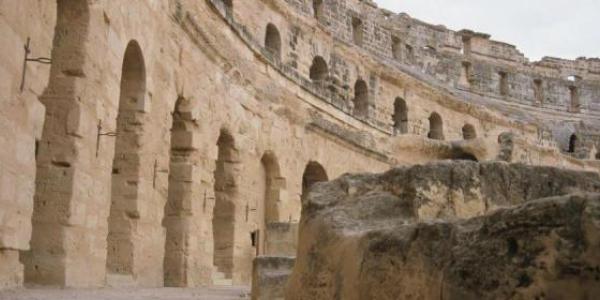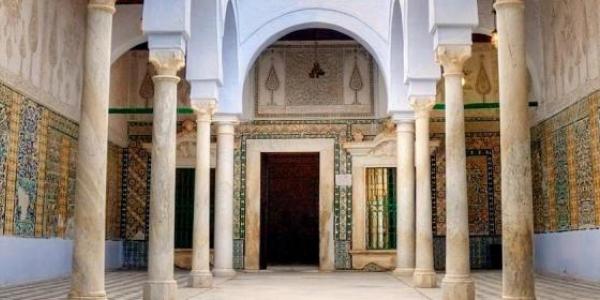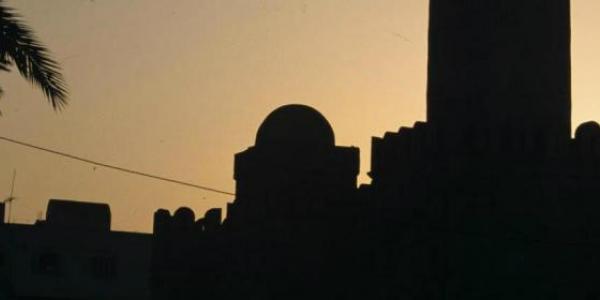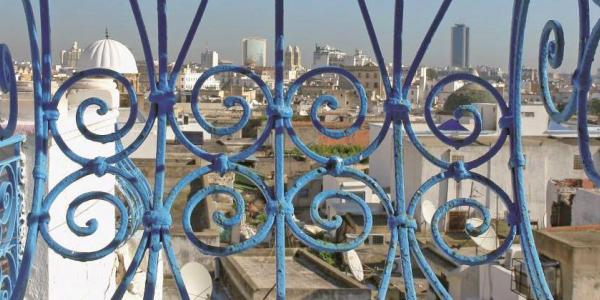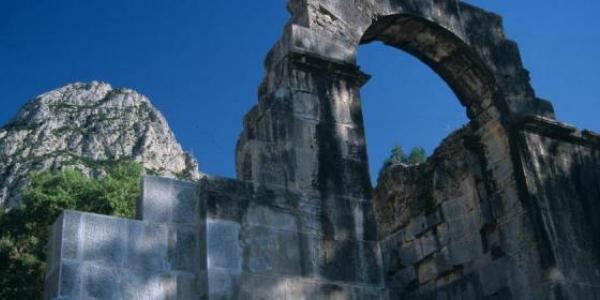Grand Mosque (Sidi Uqba Mosque)
The construction of this remarkable massive building was ordered by Uqba Ibn Nafii in the same year of the foundation of the city, in the year 670. Nevertheless it was extended, restored and even demolished and reconstructed on several occasions. Its current structure dates back to the year 836, in which the Aghlabid prince Ziadat Allah I ordered to rebuild it completely. In fact, practically all subsequent dynasties added other elements to it.
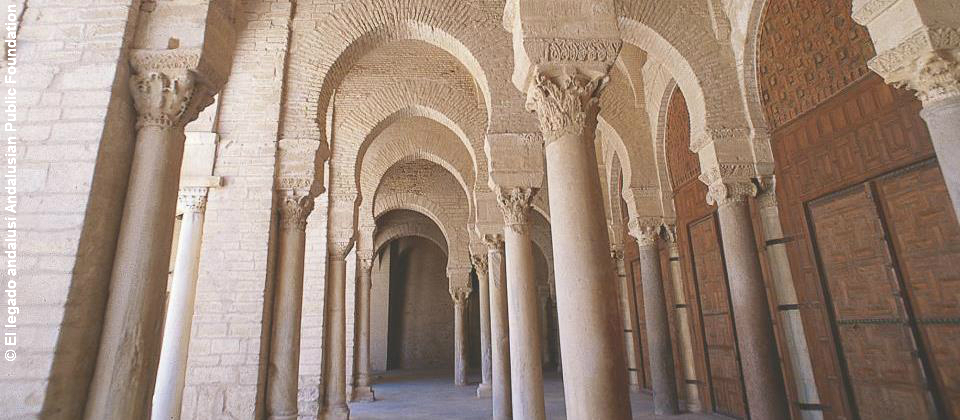
The enclosure of the Oqba Mosque is pierced with six large doors open onto the courtyard and three other doors giving direct access to the prayer hall.
The yard is massive, and occupies the centre of the Mosque. It has double galleries surrounding it, with marble columns brought from various ancient Roman temples.

The 36-meter high square minaret has three floors and is topped by a dome. This minaret served for the call to prayer and also as a watchtower. A 129-step staircase leads to its summit.
The prayer hall is dotted with a forest of granite and porphyry columns supporting capitals and arches and dating back to the Roman or Byzantine period. A heavy hanging chandelier beams over the Mihrab, that is decorated with marble panels and tiles probably brought from Baghdad. At its side is the Minbar, a pulpit sculpted out of wood brought from Mesopotamia, and from there the Imam pronounces his sermons to the faithful.
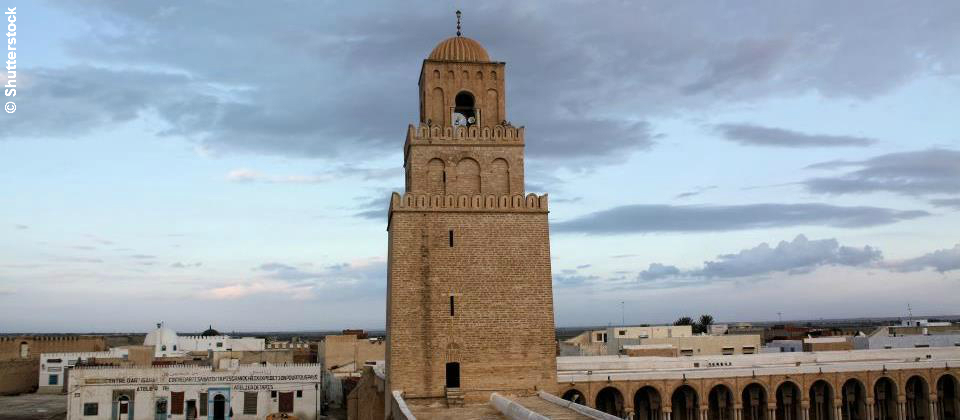
Mausoleum of Abu Zomaa al-Balaoui or the Sidi Sahbi funerary monument
This mausoleum was built in honour of Abu Zomaa al-Balaoui, a companion and barber of Prophet Muhammad. This building is also called “mosque of the Barber” since, according to the legend, Abu Zomaa al-Balaoui was carrying on him several hairs of the Prophet’s beard.
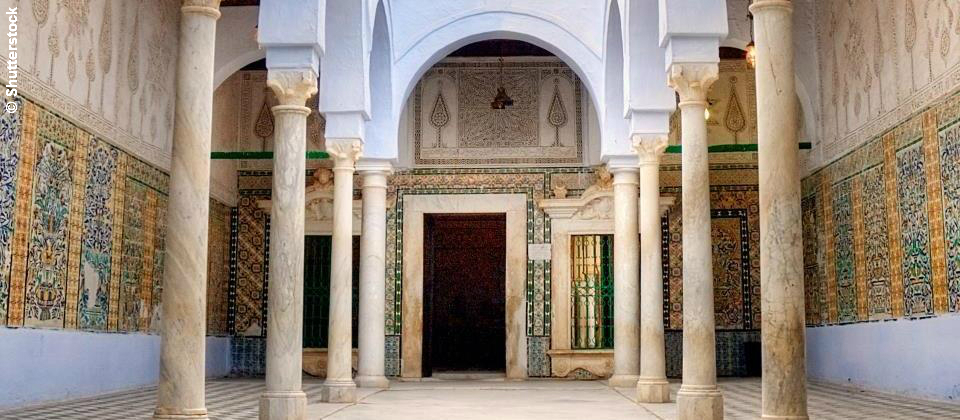
Though it was first constructed in the 7th century, its present-day structure dates back fundamentally to the 17th century, first when Hammouda Pacha (1631-1665) ordered to rebuild the dome of the mausoleum, and afterwards between 1681 and 1685, when Mohamed Bey ordered to reconstruct the whole complex of the Mausoleum.
This complex is formed by different spaces: stores, apartments, four housings for the Pasha, a medersa and a mausoleum in the strict sense.
The building shows an elegant architecture and presents quality stucco work and beautiful Turkish-style glazed panels of ceramic tiles with exquisite floral and geometric designs. It is characterised by its harmony, in spite of the fact that it combines different styles of very varied places: from the Andalusi style of the minaret (the architects who supervised the work were from al-Andalus –Ahmed and Mustafa al-Andalusi), to the Turkish, Byzantine and local influence, as reflected by the round arches of the mausoleum porticoes.
Here the community celebrates religious ceremonies like the Mawlid (birth of Prophet Muhammad).
Mosque of the Three Gates
It was built in 866, as witnessed by the date carved on its façade. It reflects a magnificent example of typical Islamic architecture, with its arched doorways and floral and geometrical reliefs. Its minaret was added in 1440 as part of restoration works.
Bir Barouta
This 12-meter deep well, dug in 796 AD, is still working thanks to a camel drawing the water from the depth of the well by using a wooden wheel and a channel system. The legend says that this well communicates directly with the holy Zem Zem Source in Mecca. Its cupola dates back to the 17th century.
Aghlabid basin
This basin was built in the semi-arid area of Kairouan by the Aghlabid Emir Ibrahim Ibn Ahmad between the years 860 and 862 AD. Its impressive size makes it one of the most famous hydraulic works in the world. It is used to receive the waters from the Chrichira mountain thanks to a 36 km-long aqueduct system. Water is first gathered in a smaller reservoir of 37 meters of diameter. Built in the 8th century, the bigger reservoir has a diameter of 128 meters.
Ramparts of Kairouan
The first walls of Kairouan were raised in 762 during the reign of the Abbasid Caliph Al-Mansur. It was rebuilt in 1054, at a time when the city was still prosperous. They then measured no less than nine kilometres. Following the Hilalian invasion that occurred around 1057, the size of the city and the extent of its walls were reduced considerably. The current walls date back to the work ordered by the Husseinite rulers and carried out between 1756 and 1772. It is pierced by huge gates (Bab), such as Bab Ech-Chouhada, Bab el-Khoukha and Bab Tounes.



